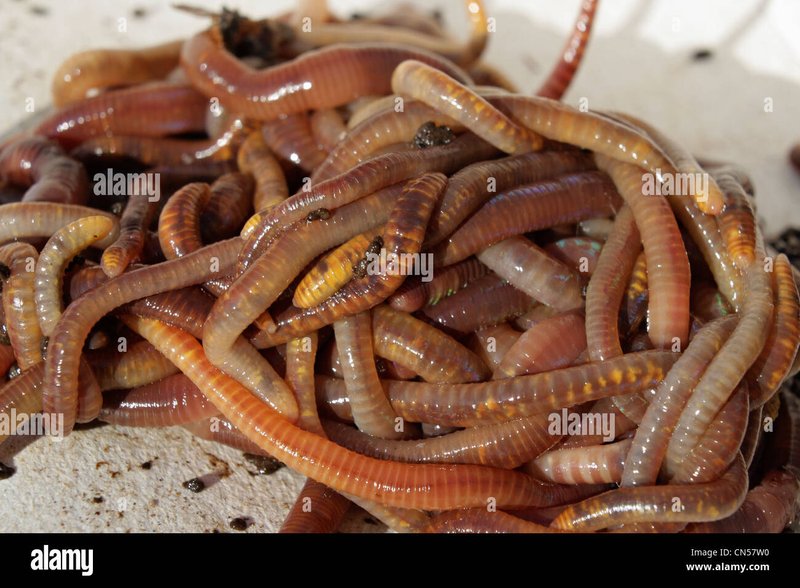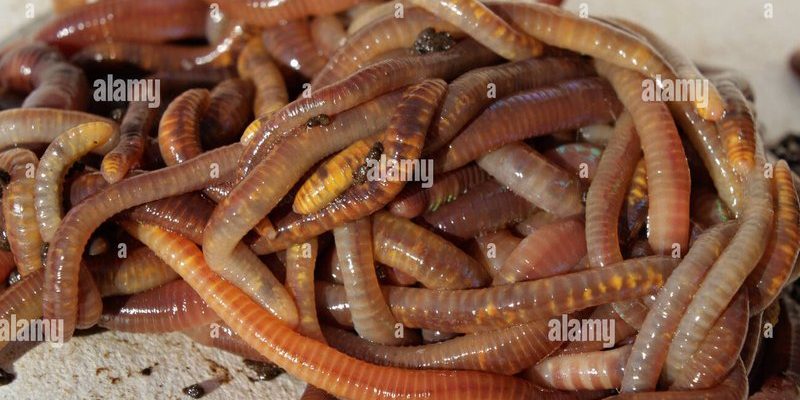
Imagine the soil as a bustling city. Eisenia hortensis is like a hard-working citizen, aerating the ground and recycling nutrients. However, just like in any city, there are predators lurking and environmental pressures that can disrupt the harmony. Here’s the thing: knowing what threatens these worms helps us appreciate the entire ecosystem they’re part of and can inspire conservation efforts. Let’s dive into the world of these nightcrawlers, exploring their challenges and the significance of their survival.
Understanding Eisenia Hortensis
First off, let’s get to know our worm a bit better. Eisenia hortensis thrives in moist soil, often found in gardens and compost heaps. What makes them special is their ability to break down organic matter, turning it into nutrient-rich compost. Think of them as nature’s recyclers!
These worms can grow up to 8 inches long and are often used in vermicomposting and bait fishing. Their adaptability and resilience make them fascinating creatures. But that resilience is constantly tested by various factors in their environment. So, what are the main threats they face?
Natural Predators of Eisenia Hortensis
Like any other species, Eisenia hortensis has its fair share of predators. Birds are one of the most common threats. They swoop down at night, searching for these worms to snack on. Robins, for instance, are notorious for their night-hunting skills. If you’ve ever seen one pecking around the ground, there’s a good chance they’re after our little friends.
Then there are mammals, such as moles and shrews, that dig through the earth to feast on worms. These creatures rely heavily on Eisenia hortensis for their diets. While it’s a part of the natural food chain, it’s essential for the nightcrawlers to have safe habitats where they can thrive without being overpredated.
Environmental Threats to Eisenia Hortensis
But the challenges don’t stop at predators. Eisenia hortensis also contends with various environmental threats. One significant factor is soil degradation. When the soil becomes compacted or loses its organic material, it becomes inhospitable for these worms. A lack of moisture can dry them out, making it hard for them to survive.
Additionally, the use of chemical pesticides can pose a serious risk. These substances are meant to eliminate pests, but they don’t discriminate. When applied to gardens and fields, they can harm our friendly nightcrawlers too. This not only affects the worm populations but can lead to unbalanced ecosystems where plants struggle to thrive.
Climate Change and Its Impact
Climate change is another looming threat. Changes in climate can lead to extreme weather patterns—like heavy rains or droughts—that disrupt the habitats of Eisenia hortensis. For instance, if heavy rains wash away soil or alter moisture levels, it can significantly affect their survival rates.
Temperature fluctuations also play a role. Eisenia hortensis prefers a stable, cool environment. When temperatures rise unexpectedly, it can lead to dehydration. If the soil gets too hot, these worms might find it impossible to survive. It’s like living in a too-hot apartment without air conditioning—all you want is a cool breeze!
Conservation Efforts and Solutions
So, what can we do to help? There are a few simple steps anyone can take. First, promoting sustainable gardening methods can make a huge difference. Reducing chemical use and incorporating organic practices can create a healthier environment for Eisenia hortensis. This means choosing natural fertilizers and pest control options whenever possible.
Another way to help is to create habitats that are friendly for these worms. You can do this by adding compost to your garden, which not only provides nourishment for Eisenia hortensis but also helps retain moisture in the soil. Also, protecting their habitats from extreme weather—like building barriers or using mulch—can offer some safety against climate impacts.
The Importance of Eisenia Hortensis in Ecosystems
Understanding the plight of Eisenia hortensis makes clear just how crucial they are in ecosystems. They help aerate the soil, which is vital for plant health. By breaking down organic matter, they contribute to nutrient cycling, ensuring that plants receive the nourishment they need to grow strong.
When we lose populations of Eisenia hortensis, we affect not just the worms but also the plants, animals, and even the soil itself. It’s a domino effect that can lead to larger ecological issues. Protecting these little creatures ultimately means protecting the entire ecosystem they help sustain.
What You Can Do
If you’re interested in helping Eisenia hortensis thrive, there are several actions you can take. Start by educating others about their importance. Share insights with friends or join local conservation groups focused on soil health and sustainable gardening.
Planting native plants in your garden can also support the ecosystem. These plants often coexist better with local wildlife, including Eisenia hortensis. Plus, incorporating mulch and organic compost into your gardening routine can enhance soil quality, making it more hospitable to our worm friends.
In addition, being mindful of water use and not over-irrigating can help maintain a balanced environment for soil-dwelling creatures.
Eisenia hortensis might seem small, but their role within our ecosystems is anything but insignificant. The threats they face from predators and environmental changes remind us of the delicate balance that exists in nature. By understanding these challenges and taking steps to protect them, we can ensure that these hardworking worms continue to thrive.
So next time you see a worm in your garden, remember the intricate life it leads beneath the ground and the vital work it does. By caring for Eisenia hortensis, we’re not just helping worms; we’re nurturing the health of our entire planet. Together, let’s make sure these little recyclers of nature can continue their essential work for years to come!

